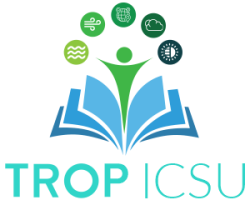Climate Solutions for Engineered Sinks Sector

Climate Solutions for Engineered Sinks Sector Reading A short reading from ‘Project Drawdown’ that discusses climate solutions for the Engineered Sinks Sector. It explains the upcoming technologies to capture carbon by direct removal from the air and application of carbon as a commodity in industrial processes. This reading includes specific solutions from each sub-sector within […]
Climate Solutions for Health and Education Sector

Climate Solutions for Health and Education Sector Reading A short reading from ‘Project Drawdown’ that discusses climate solutions for the Health and Education Sector. It explains how the connection between climate and social systems can offer profound insights into climate solutions. It also explains the importance of social factors such as family planning, population control, […]
Safeguarding Human Rights in the Context of Climate Change

Safeguarding Human Rights in the Context of Climate Change Reading A reading to learn about the effects of climate change on human rights, governmental responsibility in addressing these human rights issues, assessment of actions implemented, and recommendations on integrating human rights considerations with climate adaptation and mitigation actions. Students will read about, understand, and discuss […]
Impact of Climate Change on Cities

Impact of Climate Change on Cities Online Course An e-learning course to understand how cities are impacted by and influence climate change. Students will learn about how urban areas contribute to climate change, how climate change affects cities, and how climate change adaptation and mitigation can be included in urban planning. Use this tool to […]
Marxism and Carbon Markets

Marxism and Carbon Markets Reading A reading titled ‘Greening Capitalism? A Marxist Critique of Carbon Markets’ by Steffan Bohm, Maria Misoczky and Sandra Moog that discusses a Marxist assessment of carbon markets and their role in the evolution of global capitalism and climate change. The reading discusses four major marxist concepts: metabolic rift, capitalism and […]
Climate Change in the Geography Classroom

Climate Change in the Geography Classroom Video A video lecture by Rahul Chopra, TROP ICSU and IISER Pune on climate change educational resources that Geography teachers can use in their classrooms. These educational resources integrate climate change understanding with the core curriculum in Geography. This video lecture is part of an online e-learning course (MOOC) […]
Climate-Informed Development to Mitigate Global Poverty

Climate-Informed Development to Mitigate Global Poverty Reading A feature story on a comprehensive report by the World Bank that describes the threat of climate change to poor people and the ways to offset it through adaptation and mitigation strategies. The students will view an embedded video to understand the need for policies to manage the […]
Karl Marx and Climate Change

Karl Marx and Climate Change Video A short video titled ‘Marxist theory: Relevant to climate change today?’ by Graham Murdock, Loughborough University, that discusses the impact of capitalism on climate change. Murdock discusses Marx’s commentary on the breakdown of the relationship of humans with nature due the industrialization of agricultural practices. Students will learn the […]
Naomi Klein discusses ‘This Changes Everything’

Naomi Klein discusses ‘This Changes Everything’ Video A video by award-winning journalist, author and filmmaker, Naomi Klein, at the Cambridge Forum about her book titled, ‘This Changes Everything’. In this video, Naomi Klein summarizes her book and explains why she thinks that capitalism is the real cause for climate change. Students will learn how capitalism, […]
Introduction to Gender and Climate Change

Introduction to Gender and Climate Change Reading A guidebook of gender-sensitive approaches to climate change policy for city planning. It discusses the different ways in which women and men are affected by climate change. This guidebook includes discussions on gender inequalities such as gender division of labour, gender differentials in income, gender biases in decision […]


